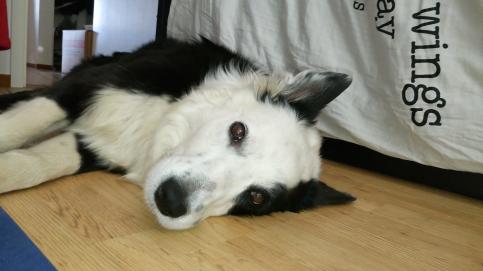Background

What is separation anxiety in dogs?
It is recognized as a set of behaviours such as vocalization, defecation, destroying furniture and other objects when the dog is alone. And these behaviours are a stress response that occurs when the dog is being separated from an attachment figure. Usually the one owner or a family member.
Separation anxiety are recognised as one of the most common behavioural problems. Only aggression is more common. If you think about it the domestication of dogs has resulted in dogs that are a very social species that have evolved to become dependent on humans and having a strong need for social contact from humans. However, the modern lifestyle of humans today often means that dog owners are forced to leave their dogs alone at home for longer periods of time. which in many cases will lead to problems in terms of separation anxiety.
Today we have approximately 900 000 dogs in Sweden alone. And in 2010 roughly 70% of the Swedish dog population were left alone at home for longer periods of time. Meaning that a significant number of dogs are at risk of separation anxiety and all behavioural problems that goes with this disorder.
When diagnosing separation anxiety today one is always dependent on behavioural observations as well as owner observations or experiences. As such a common method to phenotype behaviour is to use owner-based questioners. One of the more commonly used is the Canine Behavior and Research Questionnaire (C-BARQ) which has been standardized and used to examine different anxiety disorders and aggression.
An additional method to investigate separation anxiety but that are not used today is hair cortisol, a method that has been used to study long term activity of the HPA-axis in both humans and dogs to look in to for example chronic stress. Activity monitoring could also be an additional method to investigate separation anxiety since dogs that experience separation anxiety are often described as restless and active when alone.
The aim of this thesis work is to investigate if Swedish dogs with separation anxiety differ from control dogs in:
- Behaviour - during separation and reunion
- Hair cortisol
- Activity - And investigate the possibility to phenotype and diagnose separation anxiety through the use of an activity monitor
And to find out:
- Do dog owners know if their dogs suffer from separation anxiety?
- Can C-barq can be used to correctly phenotype separation anxiety in dogs?
Responsible for this page:
Director of undergraduate studies Biology
Last updated:
05/22/19
